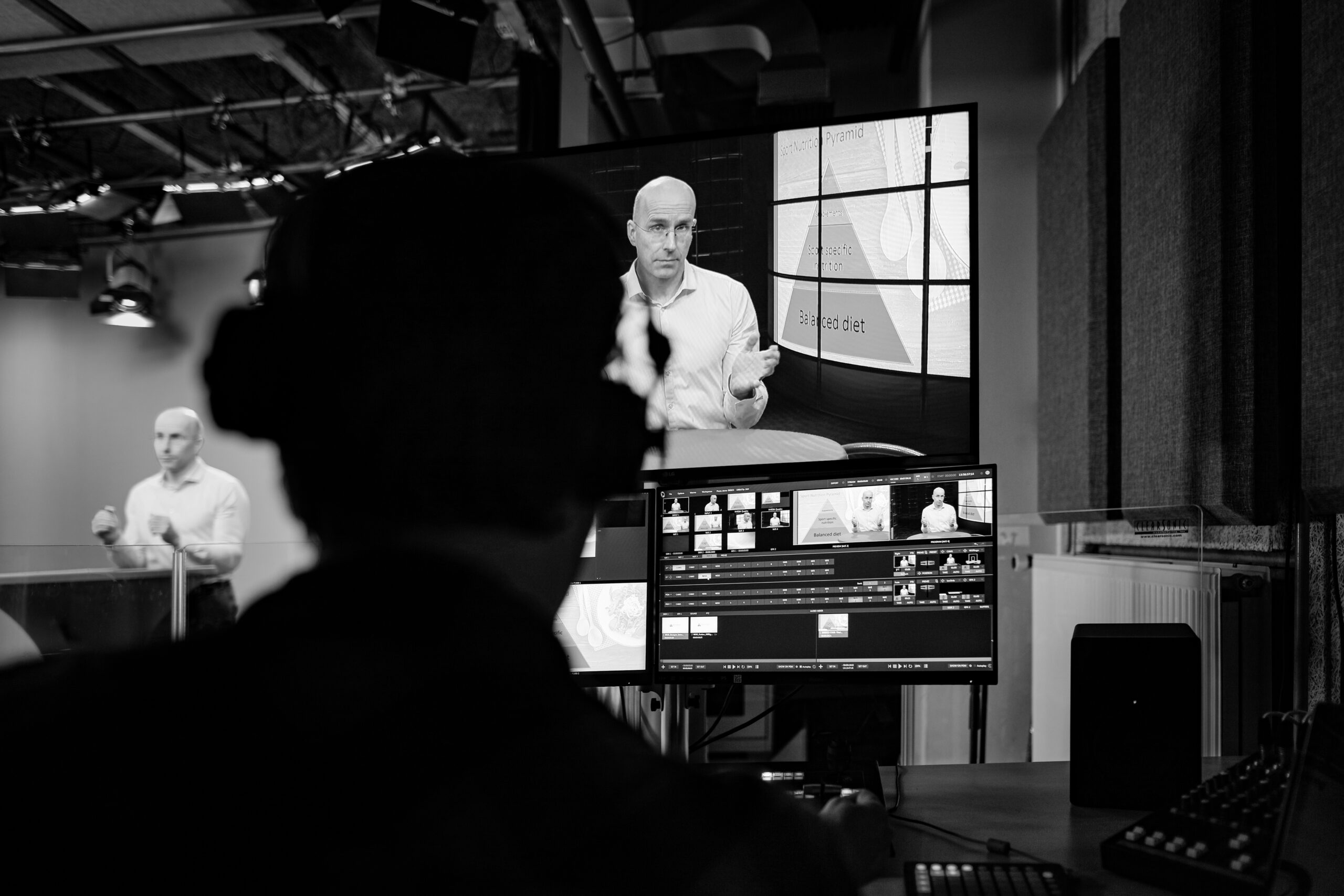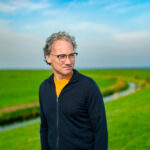On a table near the entrance to Atlas stands a box of blue envelopes full of basil seeds. You’re welcome to send them to friends or acquaintances. It’s a gift to celebrate the millionth participant in a MOOC. One million students in just five years. When you think about it, those seeds seem superfluous: the massive open online course has already taken root.
In fact, WUR’s MOOC organization has proven its worth twice over during the recent lockdown period, explains director of Open & Online Education Ulrike Wild with understandable pride. ‘The teachers have benefitted enormously from the expertise we built up over the past five years. We know how online education works, we have a studio, and we have the people and the organization. When everything suddenly had to go online from one day to the next, we didn’t have to think about how to do it. We knew what can be done in a hurry, and how it can be done better.’
And that, says Wild, is because we got on the MOOC bandwagon in good time. That is thanks to former rector Martin Kropff. The story goes that he sat next to someone on a flight who was doing a course on his iPad. It turned out to be a MOOC. Kropff saw the potential straightaway and brought the phenomenon to Wageningen, where Wild, who had only just been appointed, set to work immediately.
Now, five years later, WUR is one of the big players on the American MOOC platform EdX, with 43 courses. Nutrition courses dominate WUR’s section of EdX, with seven courses. And the undisputed king of MOOCs is Professor Sander Kersten (Nutrition, Metabolism and Genomics), whose course on Macronutrients and Overnutrition alone accounts for one fifth of all registrations. Yet Kersten had never heard of MOOCs five years ago. ‘I heard that Kropff wanted to take up the idea. So I looked it up and it was love at first sight. I was just looking for a way of taking our knowledge out into the world and reaching a broader audience. My predecessor was on Twitter but that’s not my thing. This felt like the right thing from the start.’
Squinting
Kersten tells great stories about the pioneering work that followed. ‘It was all very amateurish. There was no expertise here on visuals. Things like how to record things, or what you should wear in front of the camera. We didn’t have an autocue in the studio at De Dreijen, for instance. Someone held up a laptop in front of the camera and scrolled through the texts. It looked ridiculous on the screen: you squinted at the screen. After a couple of filming sessions we hung the laptop under the camera instead, and that worked OK. A year later, we got a camera with an autocue, and the process was professionalized step by step. Not just the technique but also the way the teachers taught.’
It was all very amateur to start with
Kersten got on the MOOC bandwagon to share his knowledge outside the ivory tower of the university. But that wasn’t the only reason. ‘Part of my motivation for making a MOOC was that I could also use the material to boost the quality of my teaching on campus. It is a new way of offering learning materials. The traditional picture is that students attend lectures and obediently go and do their homework. The reality is that half of them come to lectures and less than half do their homework. For those stay-at-home students, online options are handy because then they can listen to lectures when they want to. So I’m catering for a group of students who break the traditional mould. On the other hand, the traditional lecture-goers are not always happy with what they are now being offered online. I learned that when I used this course for my regular teaching. So now I am giving more face-to-face classes alongside online methods.’
Innovation in the university’s regular degree programmes is certainly one of the objectives aimed at with MOOCs, says Wild. ‘More and more teachers are coming to us if they want to try out something new. It is not so easy to develop a new course within WUR’s education system. And a MOOC is a good way to start. A nice example is the Drones for Agriculture course. Suddenly the MOOC is there and someone says: can’t we do that on campus too?’
In some ways these are incidental benefits. What is really innovative about MOOCs is their reach. ‘MOOCs have given us the opportunity to make courses accessible in a way that wasn’t possible before,’ says Wild. ‘Education was always bound by time and location. Online, that is no longer the case. And it is scalable. It no longer matters how many participants there are. I always say that the universities with MOOCs have gone extramural.’
MOOCs make courses accessible in a way they weren’t before
New target groups
‘Beyond that, there are a lot of people who are interested in a particular topic but don’t necessarily want to get a degree,’ she adds. ‘That possibility for spreading knowledge holds a strong appeal for the teachers. It is a tremendous development, and we got on board in good time.’ Kersten agrees with that. ‘The fact that you are catering for a group of people who we would never reach with our regular education: that feels great. People from very different backgrounds, with different perspectives. All sorts of people take part. I get a lot of satisfaction from the fact that you reach someone other than the homogeneous group of school leavers you generally get on the Human Nutrition and Health degree programme. The blonde girls with ponytails, as it were.’
The global reach of MOOCs is having an increasing impact on the world of professional learning, according to Wild. ‘More and more online options are coming on the scene for continuous learning and in-service education, and for retraining for a career switch. Excellent universities have excellent courses, and as a result, formats have emerged like professional certificates – which are useful qualifications. Animal Breeding and Genetics is a nice example. It is a real niche for the industry that is a client for it.’
WUR has five such professional certificates on EdX. They do carry a price tag, though, and that is another trend, says Wild. MOOCS are still open access and free, in principle. But the approach is changing a bit. ‘More and more, there is a business model in the background. Parts of the course are open and free, and then comes the paywall. Don’t forget that a lot of work goes into making a MOOC. And you can recoup some of that investment.’
In fact, Wild says WUR is approaching the point when MOOCs cover their own costs. On average, that is. ‘Some of them earn a lot, and others hardly anything. It all depends on the niche you’re operating in. Anyway, it’s hard to calculate the costs and benefits. The contribution MOOCs make to innovation in education on campus is hard to express in money terms, for instance.’
Kersten makes money from his MOOCs. Not personally, of course. ‘In the past year, we agreed to pool all income from the Nutrition MOOCs. We used it to appoint someone to keep the courses up to date. That is time-consuming work, which teachers don’t have time for.’ As well as professional education through individual courses, it’s possible to follow micro-Master’s and Bachelor’s programmes on EdX. WUR has four micro-Master’s programmes on offer. ‘Parts of the whole degree programme, with academic standing because you can get credits for them,’ says Wild.
Open education
‘Actually,’ says Wild, ‘I don’t think MOOCs are that interesting anymore as a phenomenon. Totally open education, and what that will do for us, is much more interesting. I foresee great changes there. The way we see our target group has changed. Everything no longer revolves around students on campus, but also around professionals in, say, Bangladesh. It is fantastic that we have the tools and methods to reach them.’ And the consequences are felt on campus too. ‘We have all grown up in classrooms, where someone stands at the front and tells you how it is. I call that the stagecoach. But education is now turning itself into a Tesla. Herding students into the lecture halls is not the best method. Due to the coronavirus, we’re seeing a lot of things being organized differently. On a smaller scale, because we can longer all cram into the big classrooms. With a lot more use being made of digital and online options, creating space to offer meaningful face-to-face education. We are making great strides in that. It’s not about online versus traditional, but about the best education for the different target groups.’
We’ve grown up in classrooms – the stagecoach – and now education is a Tesla
Wild foresees that the professional market will go on developing. ‘If you have more courses online, you may be able to open them to that market. And whether you do that through EdX or Brightspace doesn’t really matter. We’ve got three online Master’s programmes now, not on EdX as it happens. Maybe we should develop more micro-Master’s programmes that you can accumulate to get a full online Master’s. Once we have more courses online, we can also make a new timetable, a more flexible one so you can take courses at several different time of year.’
Kersten looks even further ahead. ‘Ultimately, we could work towards a situation in which courses are interchangeable between universities. Why should every university offer all the foundation courses, if you could do them elsewhere, and might be better off doing so? That sparks an interesting discussion about justifying your existence as an institution. Here in Wageningen we’re safe because we operate in a niche and we stand out in it. Offering MOOCs puts us among the frontrunners.’
A full background story about five years MOOC at WUR can be found here.

 Photo: Eric Scholten
Photo: Eric Scholten 

